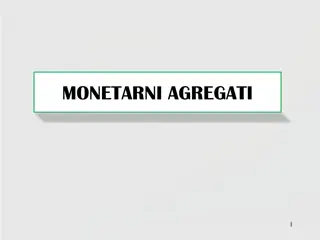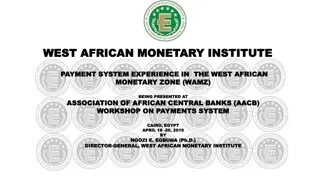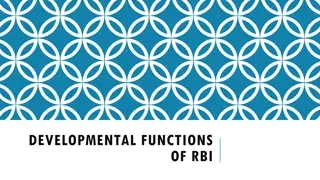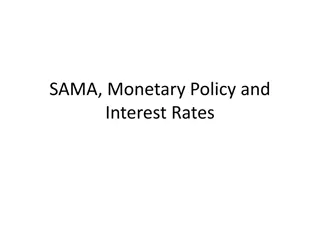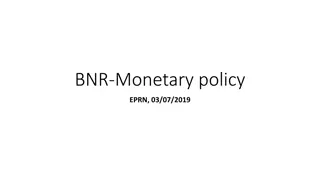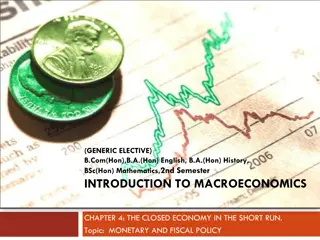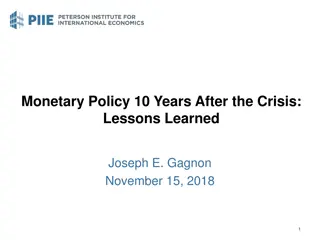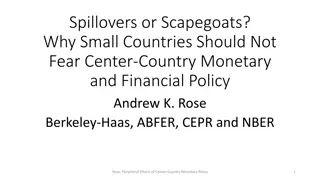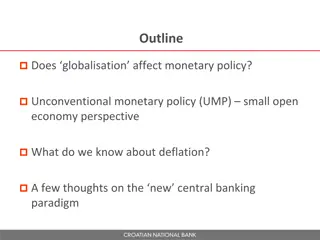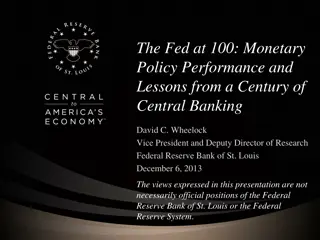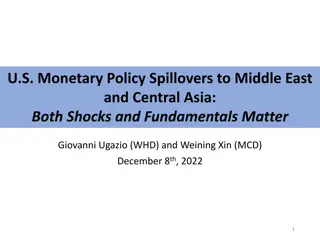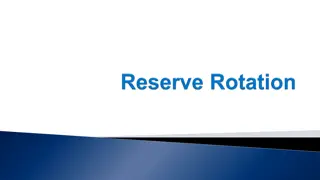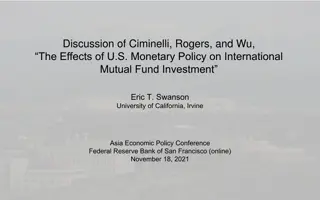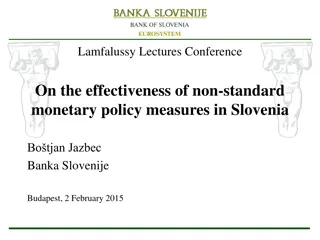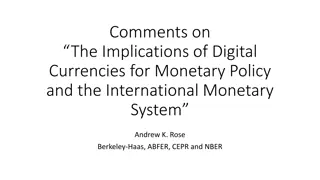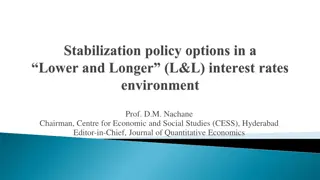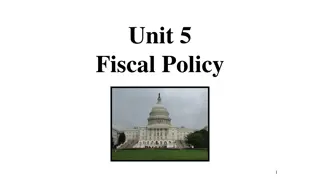Understanding the Federal Reserve System and Monetary Policy
Delve into the history, structure, and functions of the Federal Reserve System, including its role in implementing monetary policy to stabilize the economy. Explore the establishment of the Federal Reserve Act of 1913, the structure of the Federal Reserve, and its pivotal role in serving the government. Gain insights into the Federal Reserve's operations, decision-making processes, and impact on the financial system.
Download Presentation

Please find below an Image/Link to download the presentation.
The content on the website is provided AS IS for your information and personal use only. It may not be sold, licensed, or shared on other websites without obtaining consent from the author. Download presentation by click this link. If you encounter any issues during the download, it is possible that the publisher has removed the file from their server.
E N D
Presentation Transcript
Chapter 16 The Federal Reserve and Monetary Policy
Section 1 CHAPTER 16
Banking History The first United States Bank was created in 1790. There has been plenty debate over how much control a central bank should have After the Panic of 1907, Congress decided that a central bank was needed
The Federal Reserve Act of 1913 The Federal Reserve system is a group of 12 regional, independent banks Initially, the Federal Reserve System did not work well
The Federal Reserve Act of 1913 In 1935, the federal reserve system was adjusted so the system could respond to crises more effectively Today, the Fed has more centralized power so regional banks can work together and represent their own concerns
Structure of the Federal Reserve The Board of Governors- Federal Reserve system controlled by seven members. Actions taken by the Federal Reserve are called monetary policy. Current Chairman: Jerome Powell
Structure of the Federal Reserve Federal Reserve Districts-There are 12 districts, one bank per district Member banks- all nationally chartered banks join the Fed. The Federal Open Market Committee (FOMC)- Makes decisions involving interest rates and the growth of the U.S. money supply
The Pyramid Structure of the Federal Reserve About 40 percent of all banks belong to the Federal Reserve. They hold about 75% of all bank deposits in U.S.
Section 2 CHAPTER 16
Serving Government The Fed maintains a checking account for the Treasury Department and processes payments for social security checks and IRS refunds
Serving Government The Fed is the financial agent for the Treasury Department. They sell, transfer, redeem gov. securities. Handle funds raised from treasury bonds
Serving Government The district Federal Reserve Banks issue paper currency while the department of Treasury issues coins
Serving Banks Check clearing is the process by which banks record whose account gives up money and whose account receives money when someone writes a check
Serving banks The Fed monitors banks reserves and make sure consumers understand loans as well as interest rates Commercial banks can borrow money from the federal reserve. This is called the discount rate.
The Journey of a Check Check Check writer Recipient Federal Reserve Bank Check Writer s Bank
Regulating the Banking System The Fed controls how much money is in circulation at one time They also examine banks to make sure they are obeying laws and regulations Could force banks to sell risky investment if net worth falls to law
Regulating the Money Supply Factors that affect Demand for Money 1) Cash needed 2) Interest rates 3) Price levels 4) Level of income The Fed does this in order to keep inflation rates stable
Section 3 CHAPTER 16
Money Creation Money Creation is the process by which money enters into circulation
Money Creation When you deposit money in your bank, the bank loans out some of that money. The amount they do keep is the required reserve ratio (RRR) The money is lent out to business and consumers, who also spend and deposit money=more money circulating
Reserve Requirements A reduction in the RRR would allow banks to make more loans This would lead to an increase in the money supply
Reserve Requirements An increase in the RRR would require banks to hold more money This method is not used often because it would cause too much disruption in the banking system
Discount Rate If the Fed wants to encourage banks to loan more money, then they lower the discount rate This leads to an increase in the money supply
Discount Rate If the Fed wants to discourage banks from giving loans, then they increase the discount rate This leads to a decrease in the money supply
Open Market Operations Open Market Operations are the buying and selling of government securities to alter the money supply
Open Market Operations Bond Purchases lead to an increase in the money supply When the Fed sells bonds, it takes money out of the money supply
Section 4 CHAPTER 16
How Monetary Policy Works Monetarism is the belief that the money supply is the most important factor of macroeconomic performance
How Monetary Policy Works Interest Rates are high when the money supply is low Interest rates are low when the money supply is high
How Monetary Policy Works An easy money policy is when the Fed increases the money supply, decreasing interest rates cause the economy to expand A tight money policy is when the Fed decreases the money supply and increase interest rates, cause the economy to contract
The Problem of Timing Properly timed economic policy will minimize inflation If stabilization is not times properly, could make the business cycle worse
Policy lags When there is a delay in implementing monetary policy, this is called a inside lag Caused by identifying shift in the business cycle The time it takes for monetary policy to take affect once enacted is called a outside lag
Anticipating the Business Cycle The Federal Reserve must react to current trends as well as anticipate changes in the economy Expansionary policies enacted at the wrong time could lead to high inflation
Anticipating the Business Cycle The economy can take 2-6 years to recover Since it takes a while, policymakers can guide the economy back to stable levels of output and prices



